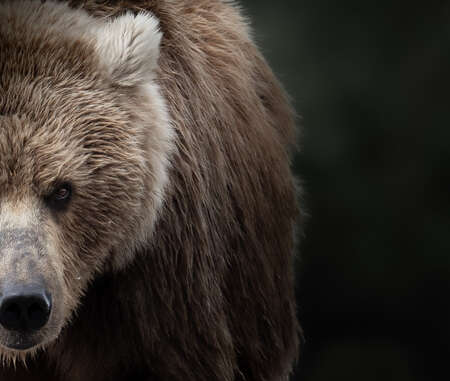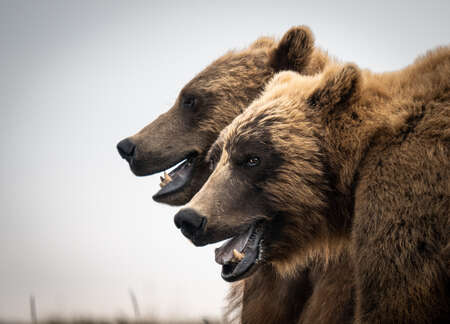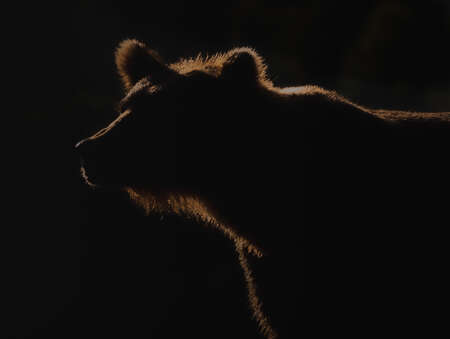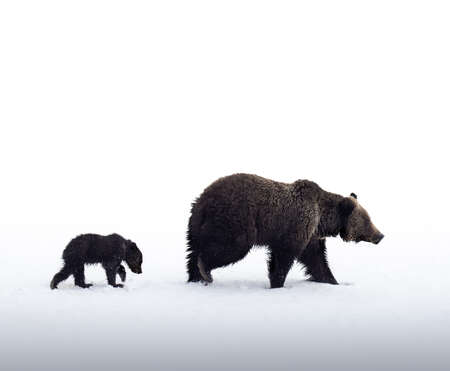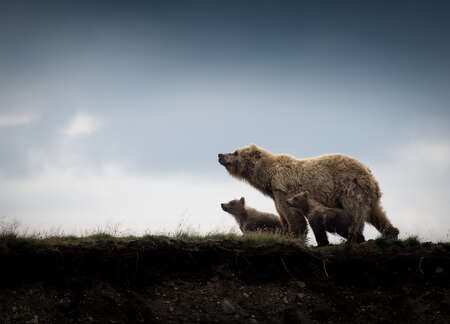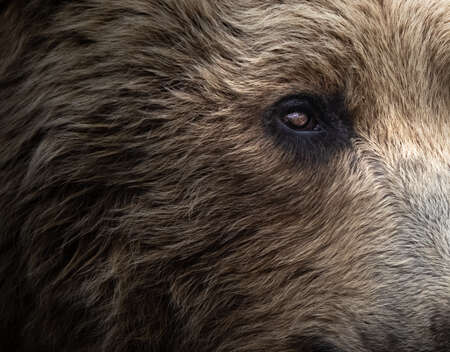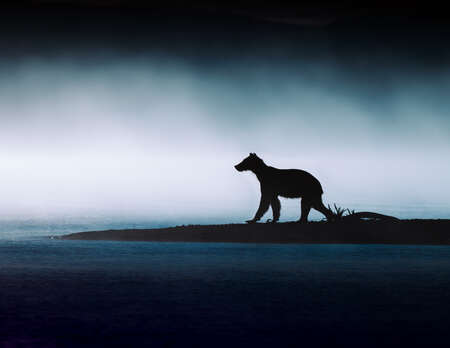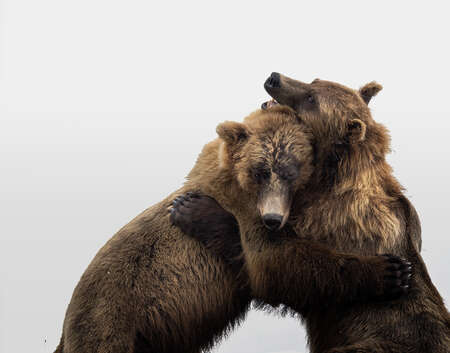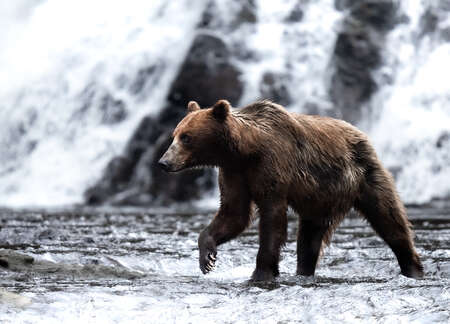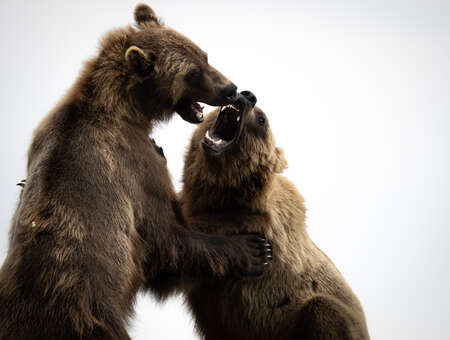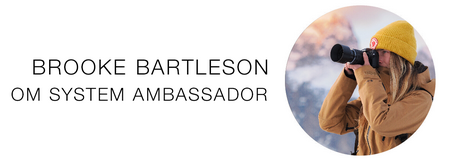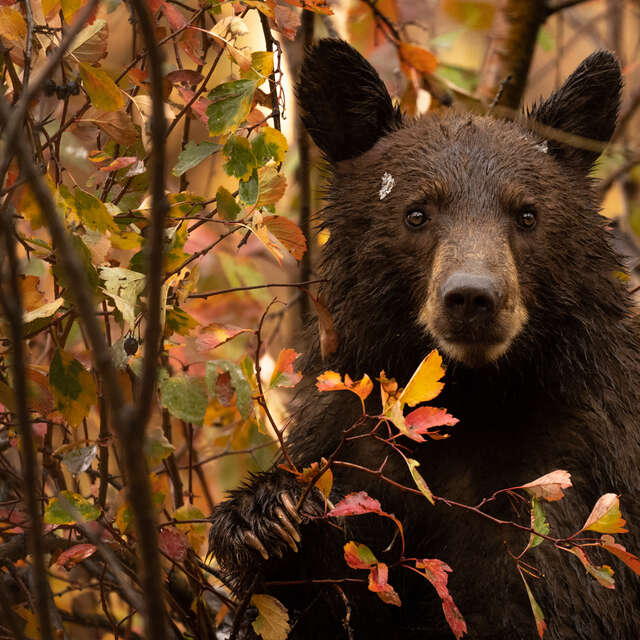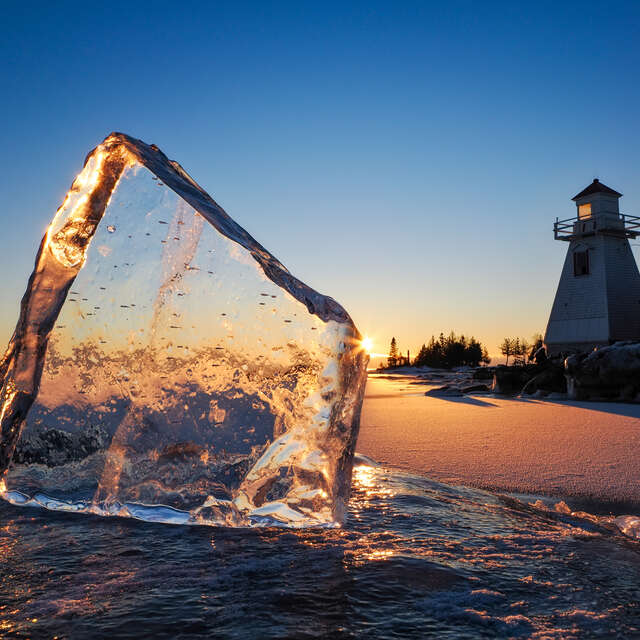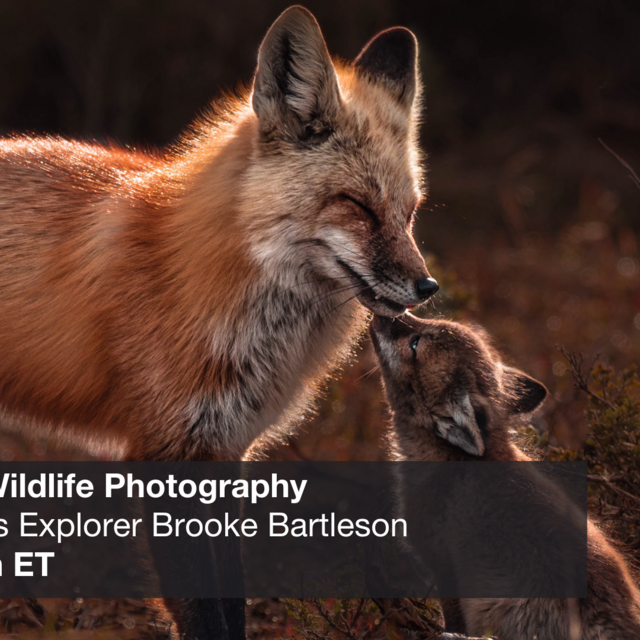"Those who have packed far up into grizzly country know that the presence of even one grizzly on the land elevates the mountains, deepens the canyons, chills the winds, brightens the stars, darkens the forest, and quickens the pulse of all who enter it." -John Murray, The Great Bear: Contemporary Writings on the Grizzly
Growing up, I could always be found with some sort of bear in hand. Teddy bears, plastic bear figurines, LEGO bears and books about bears filled my hands and my pockets and accompanied me everywhere I went. As I grew up and began to explore my passion for the outdoors, tales of bears and the promise of potentially encountering one in the wild motivated me to hike further and longer, always pushing deeper and deeper into nature in search of the wildest animal I could imagine.
Through wildlife photography I discovered the career of my dreams working as a bear guide. After years of photographing bears, I realized that I could supplement my living by sharing the opportunity to experience bears with others. Working as a guide specializing in bear viewing means I get to take clients out to see bears in person, keep both the humans and the bears safe and show the humans how easily we can safely coexist with these imposing and charismatic animals.
All of the bears I photograph and work beside are truly wild. This means there are no fences or barriers between me and the bears. This is not something I would recommend unless you have extensive experience working with bears and have studied their body language and behavior. If you don’t have a detailed resume of bear experience, the best way to safely photograph bears in an intimate setting is to hire a bear guide like me.
The locations where I guide and photograph bears are remote. Extremely remote. Accessible only by a tiny bush plane equipped with floats designed to land on open water, these are not areas that can be accessed by driving or even hiking. Often, the float plane ride is only the first part of the expedition. After being dropped off, my clients and I must often continue onward through down narrow waterways by kayak or boat. Once we make landing on shore, we proceed to hike across rocky beaches characterized by uneven terrain with thick forests and steep mountains rising up overhead.
I often feel as though bear country reflects the characteristics of bears themselves: intimidating, extreme, inspirational and wild. The harsh conditions that I face in bear country means I need to be selective about what gear I bring along. Packing light and bringing durable equipment is essential. For my camera, I bring along the OM-1 equipped with the M.Zuiko Digital 150-400mm f/4.5 TC 1.25X 200 IS Pro Lens. This power combo enables me to shoot in endlessly variable conditions, and capture bears from whatever distance they may decide to be visible.
LOW LIGHT CAPABILITIES
Bears are thick-coated animals, which means the harsh light of midday hours or warm days with direct sunlight can be exhausting for them. Bears are more likely to be active and photographable when the light is softer and temperatures are cooler. They prefer the early morning or late evening when the sun hangs low in the sky, or extreme weather conditions like heavy rain, wind and cloud cover. The low-light capabilities of the OM-1 enable me to push my ISO as high as I need to to get the shot, no matter what the conditions are.
DURABLE
The weather sealing on the OM-1 and the 150-400mm f/4.5 Pro means I don’t have to think twice about shooting in the driving rain, or over the edge of my kayak or boat while I’m on the water. Since bears are most often active when the weather is poor, it is essential to have gear that can withstand the conditions. Long hours spent in the driving rain, freezing wind, or salty ocean spray hasn’t affected my camera’s performance at all. I have a theory that my camera can withstand conditions that even my body can’t.
POWERFUL ZOOM
The distances between me and the bears can vary considerably, with some encounters bringing bears only a matter of meters away, while other times bears can be so distant they can be challenging to spot with the naked eye. The incredibly variable zoom range of the M.Zuiko Digital 150-400mm f/4.5 TC 1.25X 200 IS Pro Lens means I can change my focal length accordingly and ensure I never miss a photo opportunity
TOP NOTCH IMAGE STABALIZATION
The image stabilization offered by the M.Zuiko Digital 150-400mm f/4.5 TC 1.25X 200 IS Pro Lens combined with the in-body stabilization of the OM-1 means I never need to carry a tripod with me in the field. This is incredibly freeing, because space is limited on bush planes and small watercraft, which means bringing a tripod along is often impossible. This also enables me to keep my camera stable while photographing from the water while my kayak or boat bobs along with the tide.
LIGHTWEIGHT
I need a camera that can fit inside my guide pack along with all the safety equipment (emergency medical kit, communication devices, extra layers and survival gear) that I carry. Most telephoto lenses offered by other brands are enormous and require an entire backpack of their own, but my body and lens fit in my 50-litre pack alongside my guide gear with room to spare. The compact, lightweight portable nature of OM SYSTEM cameras will forever rank as one of the most important features for me. With all these features in mind, here’s a glimpse into a day photographing and guiding among coastal brown bears in Alaska. Summer is winding down. From the window of my float plane, I watch the leaves turn gold on the mountainside.
It is a dreary day, but the soft rain and low hanging clouds add a sense of moody wildness that feels fitting for a bear viewing expedition. Slowly, the pilot banks and turns the plane away from the mountains and navigates us north and then west along the coast while humpback whales breach the water below. The whales offer brief glimpses of their steel grey backs and tails before they sink beneath the dark sea again. Soon, the whales will head south to warmer waters. Around the same time, the bears will prepare to head into the mountains toward their dens and the promise of a long winters sleep, and my bear season will come to an end.
Slowly, the pilot begins to descend. The plane lands smoothly on the surface of the glassy sea, skidding to a halt a few yards offshore from a rocky beach. The pilot and I swing open our doors and climb out, balancing on the float of the plane. Together, we use an old canoe paddle to push the plane the rest of the distance to shore. Once we are close enough to dry land, I help my four clients disembark one at a time onto the isolated beach. We sling our packs over our shoulders and watch as the pilot taxis away from shore and takes off again, flying away into the grey skies above.
It will be five hours before he returns. As the sound of his plane fades into the clouds, we are finally alone. Just me, my clients and the bears. We walk slowly along the rocky beach, heading toward a stream that is choked with salmon. The salmon run is in full swing, and the colorful fish bridge the gap between the aquatic world of fish, and the terrestrial world of fish-eating bears. Once we reach the stream, we quietly take a seat beneath an outcropping of rocks to wait and watch for bears.
It doesn’t take long before a mother bear and her two young cubs step quietly from down the beach, following the exact path we had walked just moments before. We remain calm and seated as she approaches. She sniffs once, twice, quickly recognizing the smell of humans. She shows no fear. No frustration. No aggression, no aggravation. Humans are predictable here, in this remote location accessed only by bear viewing guides and their clients. The bears have learned that we will not harm them, we will not approach them and we will not interfere.
This mother bear has learned a sense of trust. She trusts that she can pass by and proceed unharmed. As she approaches, I reach for my camera. Quietly, with silent sequential shooting enabled, I photograph her coming toward me. Her cubs tumble along playfully behind her, hardly paying any mind to me and my clients. I zoom out as they come closer, filling the 150mm frame with their faces. Soon, they’re too close to get a good photo. I gently place the camera on the damp ground beneath me and breathe in the exhilarating moment that they walk right past, mother bear only briefly glancing at me before trotting by as if to say “I’m going, I’m going, nothing to worry about here.
Just as soon as they appeared, they are gone. They cross the stream and disappear into the dark spruce forest, where she will nurse the cubs beneath the private safety of the canopy of the trees. For the next few hours, we sit quietly in the same spot. Hardly moving. Patiently waiting. Rain falls softly, splashing quietly across my camera. Every so often, other bears meander down to the creek or along the beach. Some stop to fish, some dig for clams and some just continue on without stopping, preoccupied with whatever bear adventure they are on during that late rainy afternoon day. All the while, I pick up my camera and photograph these moments, feeling endlessly grateful for this wild life I live and the incredible opportunity I have to capture it.
Featured Products:
Brooke is a wildlife photographer based out of Idaho and Alaska. She has always been a lover of animals and advocates for the safe and ethical photography of wildlife. Brooke also works as a research tech, helping to collect wolverine DNA for population studies. Her ultimate goal is to photograph all the core species of megafauna found in North America.
When Brooke is not actively photographing, tracking, or scouting for wildlife, you can find her snowboarding and hanging out with her dog, Bruce.
CONNECT WITH BROOKE
Website: Little Bear Wildlife
Instagram: @brookelittlebear
Twitter: @FeralBrooke
